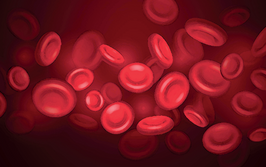Using Isothermal Titration Calorimetry in biophysical characterization of epigenetic protein

contributed by Malvern Panalytical |
This white paper summarizes how Isothermal Titration Calorimetry (ITC) is used for characterization of proteins involved in epigenetic regulation
Abstract
Epigenetic regulation of genomic DNA for gene expression is important in cellular differentiation and the development of an organism. Epigenetics also contributes to human diseases. On a molecular level, epigenetics involves modification of the histone proteins and DNA that make up chromatin. Protein families have been identified which mediate these modifications, and characterization of the specific binding interactions are important to define the specificity and affinity of the interaction. This characterization is also important in developing drugs which inhibit these chromatin-binding proteins.
Introduction to epigenetics
Epigenetics is the study of heritable changes in gene expression caused by nongenetic mechanisms, without alterations in gene structure or DNA sequence. The epigenetic state of a cell evolves during the cellular differentiation and development of an organism, and epigenetic changes are linked to cellular reprogramming. Because epigenetic mechanisms may also be responsible for the integration of environmental responses at the cellular level, they potentially play an important role in the development of some diseases.
Epigenetic regulation of gene activity is complex and not yet fully understood, and involves transcription factors, growth factors and perhaps hormones. Epigenetic processes also involve the modification of chromatin (Figure 1). A histone octamer, composed of two copies of each of the histone proteins H2A, H2B, H3, and H4, is wrapped by a strand of 145-147 bp DNA, forming a nucleosome core. Multiple nucleosomes pack together to form chromatin.
Log in or register to read this article in full and gain access to The Medicine Maker’s entire content archive. It’s FREE!



















